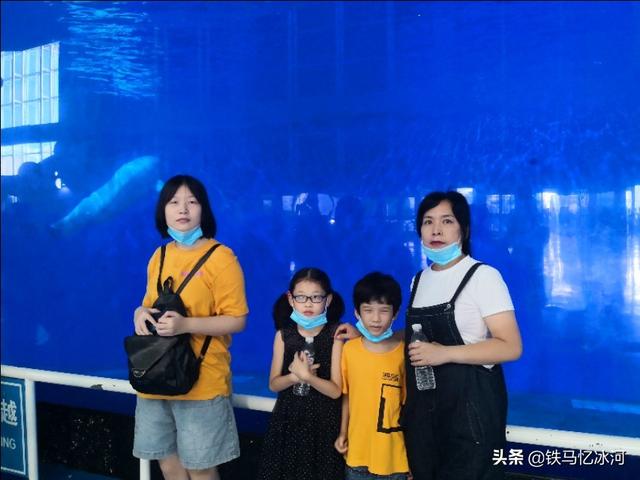自然界中有很多能力超强的生物,他们有着特殊的本领,如在飞行中筑巢。
黄蜂和蜜蜂就拥有这项本领,他们被称作“飞行建筑师”flying builders。

这些生物启发了科学家,于是一种具有超能力的机器人诞生了——飞行机器人flying robots。
这些飞行机器人能在飞行过程中制作3D物体。
想不想一起来了解这项全新的技术呢?一起来看本期《经济学人》科技板块的文章。
Buzzing builders-teams of flying robots can make 3D objects
飞行建筑师——飞行机器人团体制作3D物体
本文结构如下:

阅读之后,请回答以下几个问题:
1. What’s the main idea of the passage?
2. What tasks can flying robots perform?
3. What are the problems of flying robots?
1. Certain creatures—namely, wasps and bees—have evolved to be adept flying builders. To assemble a hive or nest, worker insects team up to deposit wax, raw wood pulp or their own saliva to the specification of a complex design that ends up being many times their size. This process takes months, many times longer than the average lifespan of all but the queen. The insects must adjust as they go—building plans can change, imperfect materials can deform or break, workers can die.
某些生物即黄蜂和蜜蜂已经进化到擅长在飞行中进行建筑的程度了。为了建造蜂房或巢穴,工蜂们要结成一对按照复杂设计的规格说明储存蜡液,原木浆或者自己的口水。
而这个最终建成的建筑比他们身体要大很多倍。而这个建筑过程则需要几个月,甚至比除了蜂王之外的所有工蜂的平均寿命要长很多。
工蜂们在工作的过程中要不断调整,因为建筑计划会发生变化,不完美的材料会变形或者断掉,或者工蜂们会死亡。
2. It is these insect building teams that inspired Mirko Kovac, a roboticist at Imperial College London, to develop a way to improve the flexibility of 3d printing. A typical 3d printer is limited by the range of its nozzle, and can only make objects smaller than itself. Dr Kovac’s team has removed these constraints by giving the printer nozzle wings.
这些昆虫建筑团队启发了Mirko Kovac博士开发出一种提升3D打印灵活性的方法。他是帝国理工大学的机器人专家。
传统的3D打印机受到喷嘴大小的限制,而且也只能制作出比机器本身小的物体。Kovac博士的团队给打印机喷嘴安装了翅膀,从而解决了这些限制。
3. Writing in the latest edition of Nature, Dr Kovac describes a system of flying robots that is composed of two types of multirotor drones: builders and scanners. The builders carry the 3dprinting nozzle. The scanners are robots equipped with cameras that are responsible for monitoring the progress of the builders.
在《自然》期刊最新一期上, Kovac描述了一种飞行机器人的系统,它由两种多转子无人机构成-建筑无人机和扫描器。
建筑无人机装载着3D打印机喷嘴,扫描器是安装有摄像头的机器人。摄像头负责对建筑无人机的工作过程进行监控。
4. The building process alternates between builders and scanners, layer by layer, printing and adjusting, until a structure is complete. First, a builder hovers over its area of operation and begins to release a jet of the building material as it manoeuvres along its flight path. The choice of material is important—it must be lightweight enough for the drones to carry but sturdy enough to hold the subsequent layers that will be built on top. Dr Kovac’s team experimented with two materials. One was a low-density polyurethane foam, which can expand up to 25 times as it dries and can be used as insulation in buildings. The other material they tested, which was sturdier and more precise, was a mixture made from cement.
建筑过程在建筑无人机和扫描器之间变化,一层一层,打印、调整直至一个结构完成。
首先,建筑无人机在操作区域上方盘旋,然后在飞行轨道操作时,释放建筑材料。建筑材料的选择很重要,质量要轻,无人机能携带;质量要结实,能够支撑其上的建筑结构层。
Kovac博士的团队试验了两种材料。一种是低密度的聚氨酯泡沫塑料,当其处于干燥状态时,能延伸25倍的面积,可以作为建筑物的隔热层。另一种测试的材料更结实紧密,是一种水泥制成的混合物。
5. Once the builder robot has sprayed a layer of material, the scanner robot flies over and inspects the progress. The system then computes the next layer that the builder should make, while also correcting for any errors that might have been discovered in what has already been built. These could be errors made by the builder-drones or imperfections in the expansion of the building material. At this point, people can also intervene in the process, supervising and correcting course where necessary.
建筑机器人喷洒完一层材料后,扫描机器人就会飞到上空,检查进展情况。然后,系统对建筑机器人要制作的下一层进行计算,与此同时对建筑过程中出现的错误进行修正。
这些错误可能是建筑无人机造成的,也可能是建筑材料延展造成的不完美。在这个时刻,工作人员也可以对这个过程进行干预,监视以及在必要时段进行修改。
6. The researchers tested the system’s capabilities by building both a large cylinder made of foam (72 layers and 2 metres tall) and a small cylinder made of the cement mixture (28 layers, 18cm). The tasks were not simple. Making circles on top of other circles would not have worked, because the perfect alignment required would have been impractical to achieve. Instead, the builder robot deposited squiggly circles that interleaved with the layers above and below, to ensure maximum stability.
研究人员建了一个由泡沫(72层厚,2米高)制成的大圆筒和一个水泥(28层厚,18厘米高)混合物制成的小圆筒,对系统的能力进行测试。
测试任务不简单。在其他圆形物体上建造圆形物体无法办到,因为这需要两个物体完美的契合,而这是无法实现的。
相反,建筑机器人制造了弯弯曲曲的圆形,与上层和下层交织在一起,从而确保了最大稳定性。
7. Dr Kovac’s robots passed the test with flying colours—the cylinders were built to within 5mm of the width and height of the planned structures, which is up to snuff as far as British building codes are concerned. While these robots have been shown to be capable of manufacturing, Dr Kovac says their bread and butter will probably be, initially, in repair.
Kovac博士的机器人出色地通过了测试。圆筒宽度和高度在计划结构的5毫米范围内,远远超过英国建筑条例的规定。
尽管这些机器有能力进行制造工作,但Kovac博士说机器人的零件可能首先得需要维修。
8. Because the flying robots can, in theory, operate anywhere, they could fix things in dangerous or otherwise in accessible places. Dr Kovac says that his robots could be used to spot and seal leaks in oil or gas pipelines, repair leaky insulation or fix cracks on tall buildings. These robots could be deployed more quickly, cheaply and with less risk to humans. Thinking more long term, Dr Kovac even sees a potential future for his construction robots, building on the surfaces of the Moon or Mars.
因为理论上,这些飞行机器人能够在任何地方运行,所以它们可以在危险地方或可达到的地方进行修补工作。
Kovac博士说它的机器人可用来发现、堵住漏油或漏气的管道,修理渗漏的隔热层或者高楼大厦的裂缝。
这些机器人可以更快地展开工作,而且对我们来说价格便宜,风险更低。从更长远来考虑,Kovac博士甚至看到了这些建筑机器人更光明的前途——在月球或火星表面进行建筑工作。






